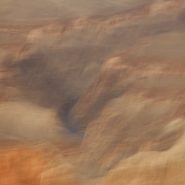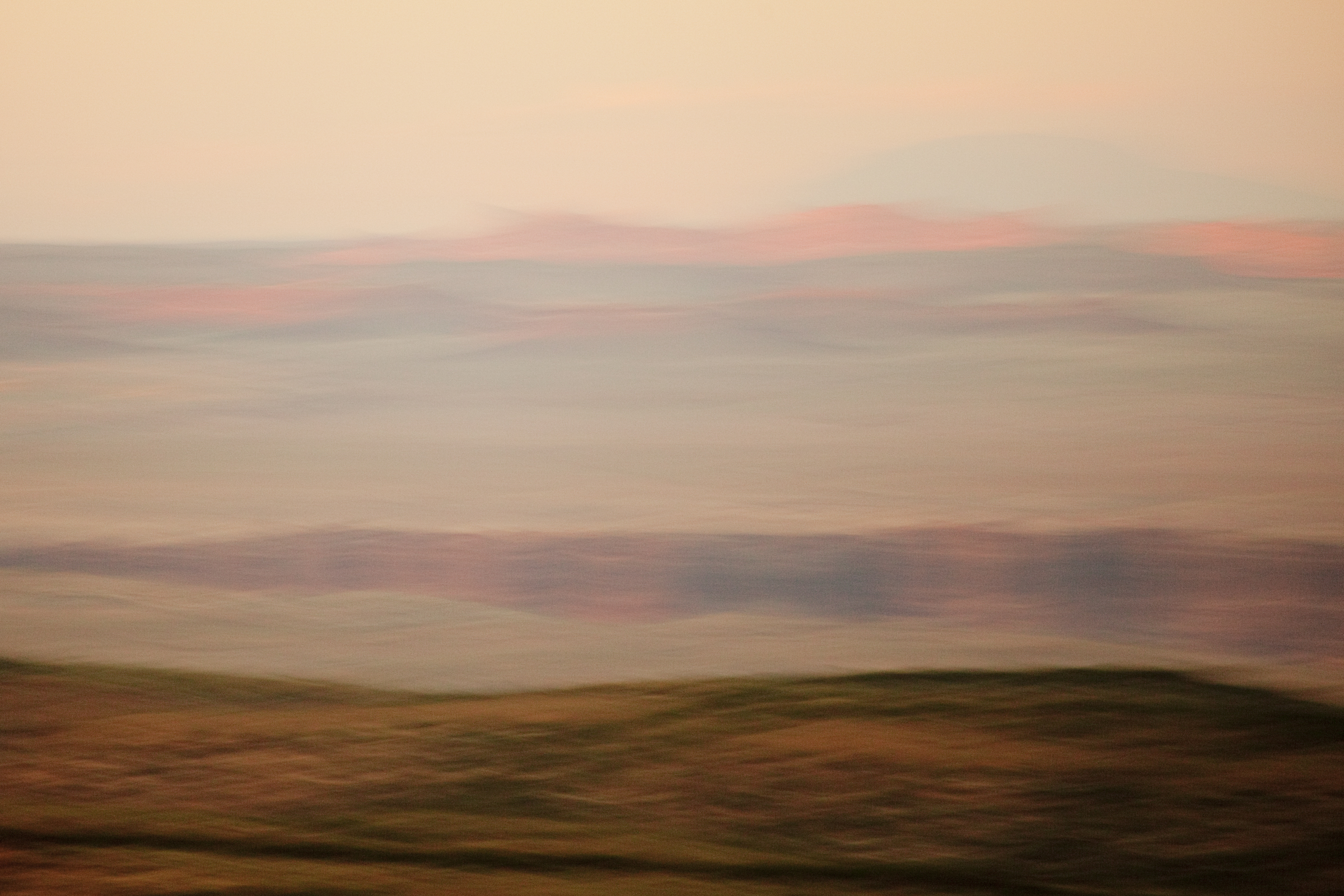
Whenever I’m in ‘landscape country’, I’m looking for interesting combinations of color, scale, perspective, contrast of its one or more planes, patterns which add or detract from the composition, and, of course, the landscape’s orientation to the sun.
Most critically, I must anticipate what the sun’s direction at first or last light will be to the landscape’s primary plane. The more the sun will be raking across that plane, generally the better the light will be.
 With my current concentration in higher elevations of the North American west, image capture is limited to two very narrow time frames a day, when the sun’s angle is low enough so as not to overpower and wash out any color and contrast— devastating for either film or digital capture. This means, in high elevations you are typically limited to 15-30 minutes of each day’s first and last direct sun.
With my current concentration in higher elevations of the North American west, image capture is limited to two very narrow time frames a day, when the sun’s angle is low enough so as not to overpower and wash out any color and contrast— devastating for either film or digital capture. This means, in high elevations you are typically limited to 15-30 minutes of each day’s first and last direct sun.
Conversely, there must be some direct sunlight. ‘Socked in’ weather is not conducive to shooting, as it eliminates most contrast, resulting in monochromatic images. With the right combination of clouds interrupting some of the direct sunlight, interesting shadows are often projected on the landscape, while diffusing much of the overpowering direct sunlight.
 The massive scale of Western landscape affects color and contrast: The more distant, the less contrast, and, therefore, the less vibrant. Depending on how gradual the depth recession, it can dissolve beautifully, or not. Shooting east, north, and west from the south rim of the Grand Canyon provides wonderful scale, with relatively gradual depth recession caused by the randomly interspersed mesa plateaus, towering monuments and jagged cliffs against the far canyon wall, beyond which the distances continue to dissolve. From the south rim, the sedimentary colors’ exquisite patterns offer one of the most incredible landscapes anywhere in the world.
The massive scale of Western landscape affects color and contrast: The more distant, the less contrast, and, therefore, the less vibrant. Depending on how gradual the depth recession, it can dissolve beautifully, or not. Shooting east, north, and west from the south rim of the Grand Canyon provides wonderful scale, with relatively gradual depth recession caused by the randomly interspersed mesa plateaus, towering monuments and jagged cliffs against the far canyon wall, beyond which the distances continue to dissolve. From the south rim, the sedimentary colors’ exquisite patterns offer one of the most incredible landscapes anywhere in the world.